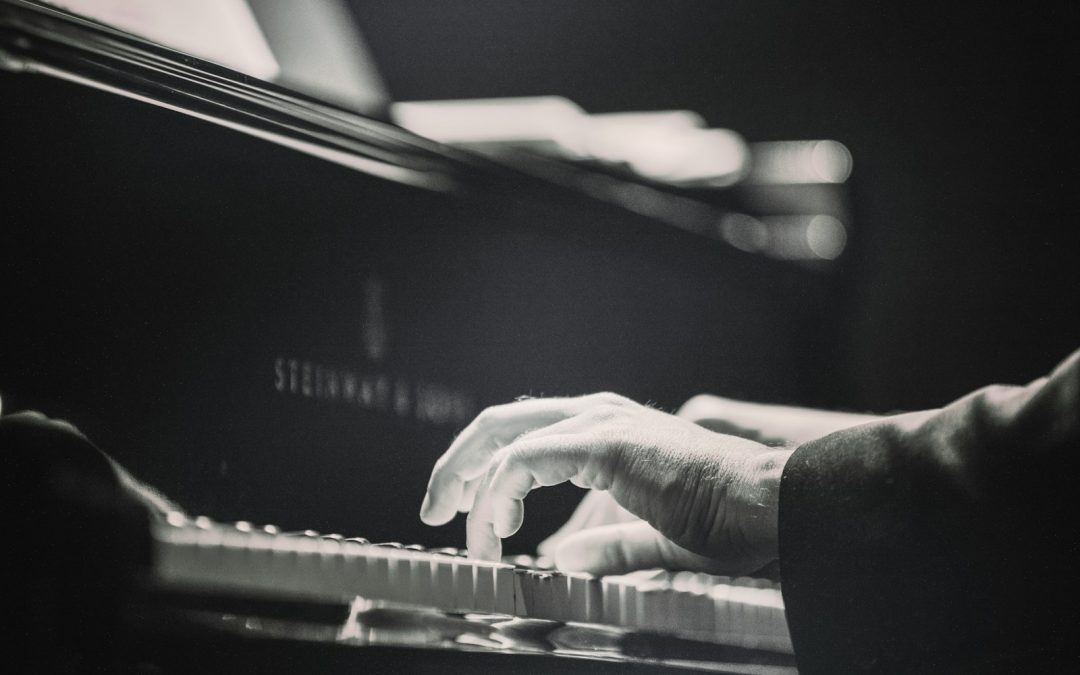If you've ever wondered whether keyboard music is the same as piano music, you're not alone. It's a common question that I've come across numerous times. In this article, we'll dive into the nuances of both keyboard and piano music, exploring their similarities and differences.
Keyboards and pianos, while similar in appearance, can produce vastly different sounds. They each have unique characteristics that define their music. We'll delve into these aspects, shedding light on what sets them apart.
So, if you've been scratching your head trying to figure out if the tune you're playing on your keyboard would sound the same on a piano, stick around. We're about to unravel this musical mystery together.
What is Keyboard Music?
When it comes to keyboard music, it's a broad term that encompasses different types of instruments that use a keyboard. This includes the piano, but it doesn't stop there. Organ, harpsichord, and synthesizers are also part of the larger keyboard family.
You might ask how diverse sounds are produced in keyboard music. Well, it's all about the technology inside the instrument. For an organ or a harpsichord, sound is created when the keys are pressed, where each key corresponds to a specific pitched sound. However, in the case of synthesizers, the sound can be modified and amplified, offering a wide range of tones and special effects.
One key element that sets keyboard music apart is its adaptability. Keyboard instruments are versatile, offering a plethora of sounds that can fit any genre from classical to pop, rock, and even electronic music. You should hear how well they perform in different music styles - it's truly awe-inspiring!
One might say the keyboard is a musical chameleon. Its sound is not confined to one genre or style, and is often used to reproduce sounds of other instruments, which further enhances its flexible character. This adaptability is one of the reasons why it's widely favored in music composition and production today.
Here's a simple breakdown of the main types of keyboards and their primary uses:
| Type of Keyboard | Primary Use |
|---|---|
| Organ | Church music, classical concerts |
| Harpsichord | Early music, baroque music |
| Synthesizer | Electronic music, pop, rock |
So there you have it - the realm of keyboard music. It offers variety, versatility, and vitality. But now it begs the question, how does it compare to piano music? Is it the same, or is it worlds apart? We'll delve into that in the next section. Stay tuned to unravel this intriguing musical journey.
What is Piano Music?
Even with all the different types of keyboards available, there's one variant that outshines others in terms of popularity - the piano. This instrument is often considered the most well-known and masterful of the keyboard music family. With its melody-rich and harmonic capabilities, it's an integral part of any western classical music ensemble.
Piano music isn't just linked to one specific genre; it's incredibly versatile. From classical compositions to jazz improvisation, pop melodies to indie numbers, pianos orchestrate the moments of brilliance found in numerous music styles. Simultaneously, they can effortlessly emphasize the emotion in a piece or play a supporting role by enhancing the harmony.
To truly comprehend the essence of piano music, it’s essential to understand that piano sound results from a mechanical action. When a key is pressed, a small hammer inside the piano strikes the corresponding strings to produce sound. The construction of the piano also plays a significant role in its sound production; the size and design of the instrument directly affect the timbre and resonance of the sound, providing its unique character.
The piano keyboard's layout presents a clear framework of the Western music system, with 12 repeating notes (7 white, 5 black) comprising an octave. Thanks to its range and polyphonic capabilities, the piano can command a wide spectrum of pitches and produce complex harmonies.
As we delve into the question of how keyboard music compares to piano music, it's important to highlight that what we call "piano music" often involves a lot more than just playing notes on a piano. It's also about how the music is composed, how it's interpreted by the musician, and how it resonates with the listeners.
The next segment will be dedicated to a comparative study between keyboard and piano music, their similarities, and their distinct aspects. We'll be using aspects discussed here as key metrics for our comparison, painting a comprehensive picture for our readers.
The Similarities between Keyboard and Piano Music
As we delve further into this comparative study, it's pivotal that we examine the similarities between keyboard and piano music; this may enlighten us to why these two are often used interchangeably in conversation.
At their core, both the piano and keyboard function on the principle of striking. What does this mean exactly? Well, in both instruments, sound is produced when a mechanism strikes a series of keys. For the piano, it's piano hammers hitting strings; for the keyboard, it's the combination of technology and electronic sound production. Either way, the act of pressing down on a key triggers a response that creates sound.
Digital pianos and keyboards also share a similar layout in terms of black and white keys, with the piano's traditional 88-key layout being commonly replicated in full-size keyboards. These layouts enable both keyboard and piano players to transition between the two instruments with relative ease.
Moreover, they often serve the same musical purpose. Both can provide solid harmonic groundwork for a piece, and they're both capable of carrying melody. Regardless of whether you're a classical virtuoso or a budding pop star, the versatility of both keyboard and piano music makes them indispensable instruments in a myriad of music genres.
Let's not forget that the learning process for both keyboards and pianos can be incredibly similar. Many of the theory, techniques and skills that apply to one also apply to the other. In fact, it's a known strategy among learners to start on keyboards and gradually transition to pianos.
In the next segment, we'll look at some of the key differences that distinguish keyboard music from piano music. This will help us understand that even with major strings of similarity, they have unique identities and serve different purposes according to different musical needs and contexts.
The Differences between Keyboard and Piano Music
Peeking into the differences between keyboard and piano music, we unveil some fascinating contrasts. It's worth noting that despite their strong similarities, certain distinctive features set them apart.
Both piano and keyboard music stem from the same foundation, but the distinction lies in the instruments. The complexity and richness of sound in a piano hinge upon its intricate architecture - strings, hammers, wooden casing all work together, creating a resonant, soulful output that's synonymous with piano music. Pianos are equipped with pedals that further enrich the dynamic spectrum, presenting opportunities for subtlety or dramatic variations in volume and tone.
Keyboards on the other hand offer a different playing experience. They are primarily electronic, mechanically simpler than pianos, and their sound is generated through digital sampling. Many come equipped with advanced features such as in-built rhythms or accompaniments, a variety of sound presets, or the capacity to connect to computers for programming and recording.
Breaking it down, here's a comparison chart of the fundamental differences between the two:
| Feature | Piano | Keyboard |
|---|---|---|
| Sound generation | Mechanical action | Digital sampling |
| Richness of sound | Deep and rich | Lighter and more versatile |
| Portability | Less portable due to size and weight | More portable because of their smaller size and lighter weight |
| In-built features | Pedals for dynamic variation | Variety of sound presets, rhythms, accompaniments, recording options |
The implications of these divergences elicit considerable impact upon the music produced. Piano music resonates with depth and richness, whereas keyboard music carries lightness and versatility to fit into different genres. This breadth and adaptability influence the learning curve and application in diverse musical styles.
Diving deeper, the bass-dominant sound in some keyboards completely alters the sound texture, developing a characteristic preference leaning away from piano music. So while the piano and keyboard share some key attributes, they coax out distinctive rhythms, melodies, and harmonies under skilled hands. It's thrilling to explore these contrasting pitches, vibrations, shades of sound that create the mosaic of keyboard and piano music.
Sound Characteristics of Keyboards and Pianos
Let's dive deeper into the deferential aspects of sound between keyboards and pianos, shall we? While both use a similar striking mechanism and similar layout of keys, the processes involved in sound generation are remarkably distinctive, thus delivering their unique sounds.
Understanding sound technologies is crucial in our journey to draw a clear distinction between keyboard and piano music. Keyboards utilize digital sound technology, providing the flexibility to simulate the sound of various instruments. It's impressive to see how many keyboard models can competently mimic the sounds of pianos, organs, flutes, and even string instruments. Sometimes, their range reaches as far as to mimic unusual sounds like drum patterns, songbirds or even sirens. This wide variety of sound options makes keyboards incredibly versatile and capable of producing an array of sound effects not possible on traditional pianos.
Pianos, on the other hand, use acoustic sound technology, with each note produced by the striking of a hammer against a string. This string has been meticulously tuned to vibrate at exactly the right frequency. Since a piano has around 230 strings, their interaction results in a distinct richness and depth of sound, much appreciated by musicians and listeners alike. The sophistication and natural resonance of a piano's sound are inseparable from the very nature of the instrument, something that a synthesized electronic instrument finds hard to emulate completely.
The following table offers a simple comparison between keyboard and piano sound characteristics:
| Keyboard | Piano | |
|---|---|---|
| Sound Technology | Digital | Acoustic |
| Type of Sound | Simulated, Varies widely | Natural, Rich and Harmonic |
| Sound Variety | Extensive | Limited |
| Sound Depth | Moderate | High |
It's worth mentioning that the choice between a keyboard and a piano can often boil down to personal preference. For some, the electronic and adaptable nature of keyboards is a major advantage, whilst others are drawn to the authentic and distinctive sound of a traditional piano. The differentiation between the two often becomes a matter of the specific requirements and preferences of the musician.
Conclusion
So, is keyboard music the same as piano music? While they're similar in many ways, they're not identical. Both fall under the umbrella of keyboard instruments, yet they differ in sound generation, richness of sound, and versatility. Keyboards, with their digital technology, offer a range of simulated sounds and portability. Pianos, on the other hand, offer a unique richness and depth of sound thanks to their acoustic technology. The choice between the two often boils down to personal taste and the musician's specific needs. Remember, it's not just about playing notes, it's about creating music that resonates. Whether you choose a keyboard or a piano, it's your interpretation and expression that make the music come alive.
Harlan Kilstein began playing piano during covid with no piano background at all. He taught himself how to play learning what to do and what not to do.
Today he's an advanced intermediate player and can help you grow in your skills because he learned all this on his own.








